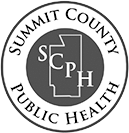General Steps for Preparedness
Taking some simple steps to prepare yourself and your family can improve your chances of staying safe and healthy during a disaster situation. The following are recommendations for making basic preparations and plans:
- Assemble disaster supply kits for your home and car (include nonperishable food, bottled water, first aid items, flashlights, batteries, battery powered radio and/or television, blankets etc.).
- Remember to replace food and water on a regular basis.
- Learn and teach others how to turn off the electricity, gas, and water.
- Update insurance policies to ensure adequate property coverage.
- Know how fire extinguishers work (check fire extinguishers and replace batteries in flashlights twice a year).
- Make a list of any special needs for elderly or disabled persons, children or pets.
- Develop a habit of keeping a full tank of gas in your car.
- Put supplies needed for cleanup in a safe place.
- Safeguard copies of important documents in sturdy waterproof containers.
- Create a family disaster plan and practice it regularly.
- Know about community response programs.
- Have a list of organizations that can be contacted for emergency assistance and keep it with disaster supplies.
PREPARE YOUR OWN DISASTER SUPPLY KIT
It is recommended that each home and car contain a disaster supply kit. The home kit should be stored in a convenient location known to all family members. Food, water, and other time sensitive items should be replaced twice a year (time change dates in spring and fall are recommended). The kits should contain the following items:
Water
- One gallon per person per day is recommended with a minimum of three days' supply.
- Store in clean, sanitized containers with screw-on caps. Sanitize containers using one teaspoon of unscented household bleach in one gallon of water. Pour this solution into containers; let stand 2 minutes, drain, then fill with tap water.
- Label containers and store in a cool, dark place. Replace water every 6 months.
Food
- Store a three-day supply of food that does not need mixing or cooking with water.
- The following foods are recommended: ready to eat meats, fruits, vegetables, canned juices, canned milk, peanut butter, jelly, granola bars, trail mix, infant foods. Other items may include salt, pepper, sugar, vitamins, cookies, candy, cereal, coffee, tea.
- Don’t forget to include food and water for family pets.
First Aid Kit
- If purchasing a kit, select one approved by the American Red Cross.
- If assembling a kit at home, the following items should be included: sterile bandages and gauze pads in assorted sizes, adhesive tape, triangular and roller bandages, scissors, tweezers, needles, safety pins, antibacterial towelettes, thermometer, tongue depressors, sunscreen, petroleum jelly or lubricant, soap, hand sanitizer, latex gloves, pain reliever, antacid, anti-diarrhea medication.
Tools & Supplies
The following items should be placed in your emergency supply kit:
- Aluminum foil
- Area map
- Batter operated radio / TV
- Bleach for disinfecting (replace bleach every 6 months)
- Cash, check or traveler's check (in watertight container)
- Dishwashing detergent
- Fire extinguisher
- Flashlight
- Matches (in watertight container)
- Needles, thread
- Personal hygiene products
- Pencils or pens, paper
- Plastic cups and utensils
- Plastic / paper plates
- Plastic garbage bags
- Plastic storage containers
- Pliers
- Portable potty or plastic bucket with lid
- Shut-off wrench for utilities
- Tape (heavy-duty)
- Toilet paper
- Utility knife
Clothing
- Your supply kit should contain at least one change of clothes for each family member.
- Include blankets or sleeping bags.
- You may wish to include rain gear, sunglasses, work boots, hats and work gloves.
- Don't forget special need items such as diapers, medication, glasses, baby food or baby formula, games or a few toys children.
Click here to learn about how to safely and effective clean up after a disaster:
